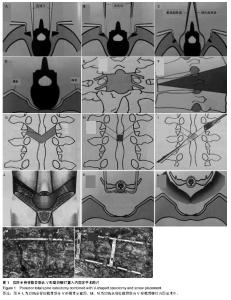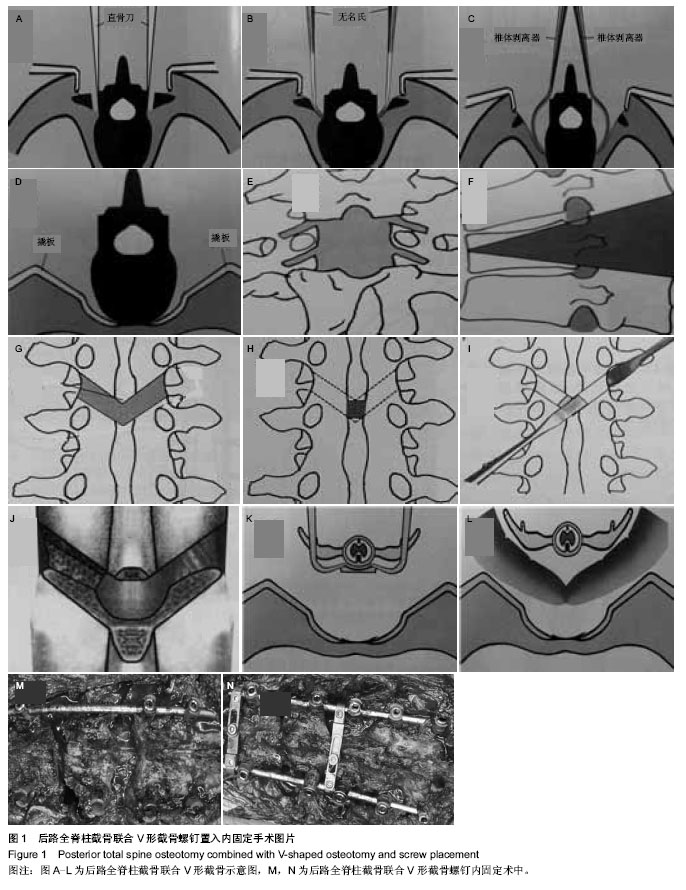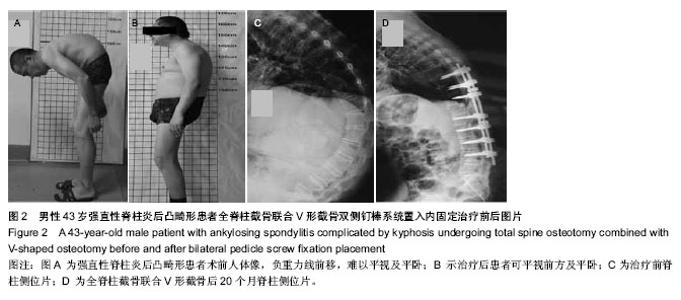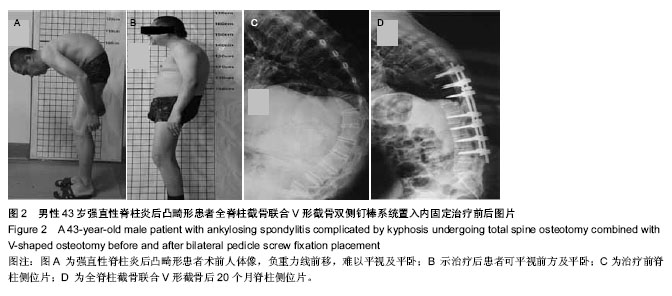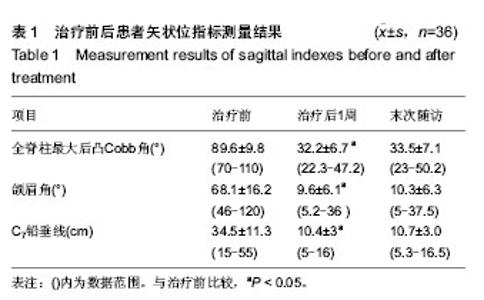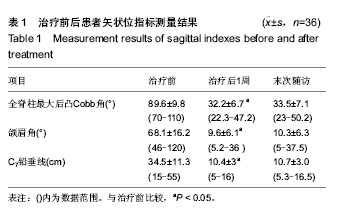| [1] 古洁若,潘云峰.脊柱关节炎与强直性脊柱炎[M].北京:科学出版社, 2013:178-179.
[2] Suk KS, Kim KT, Lee SH, et al. Significance of chin-brow vertical angle in correction of kyphotic deformity of ankylosing spondylitis patients. Spine. 2003;28(17): 2001-2005.
[3] Chang KW, Tu MY, Huang HH, et al. Posterior correction and fixation without anterior fusion for pseudoarthrosis with kyphotic deformity in ankylosing spondylitis. Spine. 2006;31:E408-413.
[4] Arun R, Dabke HV, Mehdian H. Comparison of three types of lumbar osteotomy for ankylosing spondylitis: a case series and evolution of a safe technique for instrumented reduction. Eur Spine J. 2011;20(12):2252-2260.
[5] Kiaer T, Gehrchen M. Transpedicular closed wedge osteotomy in ankylosing spondylitis: results of surgical treatment and prospective outcome analysis. Eur Spine J. 2010;19(1):57-64.
[6] Chang KW, Tu MY, Huang HH, et al. Posterior correction and fixation without anterior fusion for pseudoarthrosis with kyphotic deformity in ankylosing spondylitis. Spine,2006,31: E408-413.
[7] Van Royen BJ, de Kleuver M, Slot GH. Polysegmental lumbar posterial wedge osteotomies for correction of kyphosis in ankylosing spondylitis. Eur Spine J. 1998;7:104-110.
[8] Min K, Hahn F, Leonardi M. Lumbar spinal osteotomy for kyphosis in ankylosing spondylitis: the significance of the whole body kyphosis angle. J Spinal Disord Tech. 2007;20: 149-153.
[9] Chen IH, Chien JT, Yu TC. Transpedicular wedge osteotomy for correction of thoracolumbar kyphosis in ankylosing spondylitis: experience with 78 patients. Spine. 2001;26: E354-360.
[10] Bridwell KH, Lewis SJ, Lenke LG, et al. Pecicle subtraction osteotomy for the treatment of fixed sagittal imbalance. J Bone Joint Surg (Am). 2003; 3: 454-463.
[11] Brox JI, Helle A, Sørensen R, et al. Functional outcome after lumbar closing wedge osteotomy in ankylosing spondylitis. Int Orthop. 2009; 33: 1049-1053.
[12] Van Royen BJ, De Gast A. Lumbar osteotomy for correction of thoracolumbar kyphotic deformity in ankylosing spondylitis. A structured review of three methods of treatment. Ann Rheum Dis. 1999;58:399-406.
[13] 钱邦平,邱勇,王斌,等.强直性脊柱炎胸腰椎后凸畸形的手术矫形时机选择[J].中华风湿病学杂志,2007,11(2):101-104.
[14] 马原,余光宇,田慧中,等.椎板V型截骨矫正强直性脊柱后凸畸形的临床效果分析[J].中国矫形外科杂志,2011,19(23):1941- 1943.
[15] 田慧中.“田氏脊柱骨刀”在矫形外科中的应用[J].中国矫形外科杂志,2003,11(15):1073.
[16] 王岩,毛克亚,张永刚,等.双椎体截骨术矫正重度强直性脊柱炎后凸畸形.第三届中国国际骨科学术会议,2009.08.265-268.
[17] Hehne HJ, Zielke K, Bohm H. Polysegmental lumbar osteotomies and transpedicled fixation for correction of long-curved kyphotic deformities in ankylosing spondylitis: Report on 177 cases. Clin Orthop Relat Res. 1990;(258): 49-55.
[18] Bridwell KH. Decision making regarding Smith-Petersen vs pedicle subtraction osteotomy vs vertebral column resection for spinal deformity. Spine. 2006;31(19 Suppl): 171-178.
[19] 田慧中,马原,李明.脊柱畸形截骨矫形学[M].北京:人民卫生出版社,2011:132-133.
[20] Debarge R,Demey G,Roussouly P.Sagittal balance analysis after pedicle subtraction osteotomy in ankylosing spondylitis. Eur Spine J. 2011;20(Suppl 5): 619-625.
[21] Ikenaga M,Shikata J,Takemoto M, et al. Clinical outcomes and complications after pedicle subtraction osteotomy for correction of thoracolumbar kyphosis. J Neurosurg Spine. 2007; 6(4): 330-336.
[22] 匡正达,叶启彬,张新宇,等.脊柱后路截骨内固定治疗强直性脊柱炎后凸畸形[J].中国矫形外科杂志,2007,15(19):1510-1512.
[23] 姚子明,仉建国,邱贵兴,等.一期后路全脊椎切除治疗重度脊柱畸形围手术期并发症及相关危险因素分析[J].中华骨科杂志,2013, 33(5):440-446.
[24] 马原.全脊柱截骨矫正严重后凸畸形[J].中国矫形外科杂志,2006, 14(3):187-188.
[25] 马华松,陈志明,杨滨,等.脊柱畸形后路截骨术神经并发症分析[J]. 中华外科杂志,2012,50(4):328-332 |
